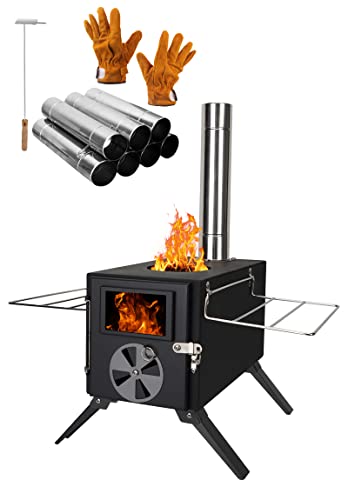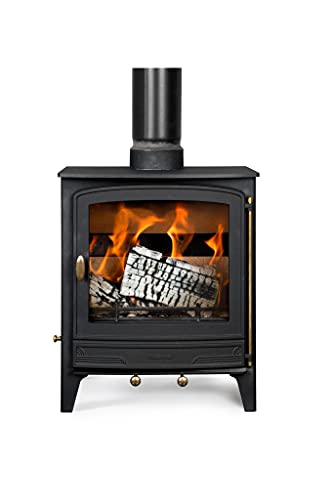Why No One Cares About Wood Burning Fire
페이지 정보

본문
 The Dangers of a Wood Burning Fire
The Dangers of a Wood Burning FireA wood-burning fireplace can be an enjoyable and relaxing experience. It can also produce harmful combustion by-products. It is important to learn about the way that wood burns and how to properly use your fireplace.
Choose mature logs or kiln dried logs. Seasoned logs are less moist and burn hotter than unseasoned logs.
Burning Time
 Heating wood with wood is a traditional and effective method of heating. This kind of fire can release pollutants from both the indoor wood burner stove and outdoor environment that are detrimental to the human body. A well-designed fireplace, used with skill can lessen the negative effects of burning wood.
Heating wood with wood is a traditional and effective method of heating. This kind of fire can release pollutants from both the indoor wood burner stove and outdoor environment that are detrimental to the human body. A well-designed fireplace, used with skill can lessen the negative effects of burning wood.The time it takes to burn a woodfire is determined by its temperature. The temperature of the fire can affect the amount of smoke that is produced and the amount of carbon monoxide released. If carbon monoxide levels are high, they may impede the escape of occupants from a burning structure. It is important to keep a low heat level on the fire in order to avoid this.
During the initial stage of a fire, volatile gasses such as alcohol and methane are released from the wood's cellulose. These gases are combustible but non-combustible based on the moisture levels and the pyrolysis temperature of the sample. The temperature of pyrolysis can rise to 325 degrees Celsius. At this point, cellulose begins to decompose and create charcoal and tar. This process is referred to as wood pyrolysis.
In addition to the volatile gases, burning wood releases a range of other toxic combustion products, such as dioxins and polyaromatic hydrocarbons (PAHs). PAHs are linked to cancer and other diseases both in humans and in animals. They can also contaminate soil and water. To lessen the negative effects of PAHs, wood must be burned in a well ventilated area.
A wood stove with the ability to extend its burn time can maintain visible flames for hours, while using only a small amount of fuel. This method involves laying wood with lighter kindling and heavier pieces to stop the fire from burning out too fast. This method can be used to build a the appearance of a fire that produces high heat for overnight use or while you are working.
The length of the fire is determined by various factors, including the moisture content in the wood. Dry wood will have a shorter burning time than damp wood. The absorptivity on the sample surface also influences its burning time. Simms [59] observed that the critical heat flux needed to ignite Mahogany and oak samples with coated surfaces was considerably lower than that without them.
Temperature
The temperature of a flame is incredibly crucial. The temperature of a fire can affect how quickly it burns as well as the amount of heat it creates. It can also influence the risk to burn yourself. It also affects the amount of smoke produced. Smoke can irritate eyes and throats, so it's best to avoid breathing it in.
When wood is burned, it creates lots of heat and it can reach very high temperatures. The temperature of a fire will vary based on the type of wood that is used and its moisture content. For instance wet wood has a lower burning temperature than dry wood. Wet wood absorbs more water and therefore produces less heat. It is crucial to use dry wood and you should also ensure that the wood has been seasoned prior to burning it.
When the wood reaches its highest temperature of combustion it will release lots of heat and ash. The amount of ash released will be based on the type of wood that is being burned and how hot it burns. Certain types of woods, like oak and larch create very little ash. Other woods, like the birch, produce large amounts of ash.
When the wood starts to burn, it will undergo three stages of pyrolysis. This process starts with an chemical reaction that transforms the organic compounds present in the wood into methane and carbon dioxide. The gases produced are then absorbed into the air. When the wood is heated, these gases will rise, and ignite the wood burning stoves uk's surface and create the appearance of a flame, which heats the wood until it combusts.
The temperature of a fire that is wood burning can be extremely high and can cause damage to surfaces if it comes in contact with them. Avoid touching the fire with your hands since it could cause serious burns. Wearing gloves and working in an area that is well ventilated will lessen the risk of being burned. Also, it is recommended to wear a face mask when working woodburning stoves near me (https://www.google.com.gi) a wood burning fire to prevent inhaling the smoke.
Smoke
Wood burning fires emit smoke which is a mixture of gases as well as fine particles (also known as particulate matter (PM), that contains harmful air pollutants. PM from wood stove online combustion can contain harmful organic compounds, such as benzene and formaldehyde, as well mineral particles such as calcium magnesium, and potassium. These particles can trigger a variety of health problems such as respiratory diseases and cancer. Inhaling wood smoke can also cause people to inhale CO, a odorless, colorless gas that can be deadly in small doses.
The smoke that comes from the wood fire is mostly due to volatile organic compounds (hydrocarbons) evaporating from the burning material. The smoke contains water vapor, as well as the by-products of incomplete burning (such as creosote) and some unburned material called ash.
When choosing what kind of wood to burn in your woodstove or fireplace It is best to select firewood that has been seasoned. Split logs, that were stored away from the elements and allowed to dry for a time until they attain an average moisture content of 20 and 25 percent, will burn more slowly and produce less creosote. One way to determine the moisture content of a log is to knock it on two sides. A damp log will sound dull, while wood that is seasoned will sound sharp.
The heat produced by wood fire draws air from around it and the smoke and other byproducts of combustion are pushed out through the chimney. If the ventilation system in your home is not sufficient it could mean that the chimney is not able to draw enough air and could create a back draft, which could cause the byproducts of the fire to build up inside the home. This can cause a buildup in dangerous carbon monoxide, as well as flammable creosote and cinders.
Smoke from wood-burning fires could be particularly harmful to people over the age of 65, those suffering from lung or heart conditions children, and outdoor fans. These people are more likely to suffer health effects from wildfire smoke like COVID-19 symptoms, as well as aggravated asthma as well as chronic lung and heart conditions.
Safety
If you're using a wood burning fire, there are a few precautions to take to minimize the risk of accidents and fire damage. It is recommended to use the fireplace or stove with a wood screen and keep all flammable items at 3 feet from the fire. Smoke and carbon monoxide detectors should be installed in your home to alert you when hazardous gases are detected. It is not advisable to leave a burning fire unattended, as even a small flame can cause an explosive explosion. You should also only utilize a metal ash container and a shovel to remove ashes from your wood stove or fireplace. Keep it away from any flammable items.
Lighting the Fire
To light a fire, first lay down a layer of cleft dry logs on top of a bed of ash. Add a layer of twigs, kindling and ash to the pile. Make sure that there is enough space between each piece of wood to allow for air flow, as this will prevent the fire from dying too quickly. If you need additional help getting your fire started Try adding a few firelighters to the mix.
It is also an excellent idea to open a door when you are starting your fire, as this will allow it to get the oxygen it needs to be able to burn brightly. This is especially crucial for modern homes, which are often tightly insulated and lack natural draft or ventilation.
Once your fire has built up, you can start adding larger pieces of wood to it. But, it is important to keep in mind that even the most seasoned hardwoods such as oak and hickory produce lots of creosote after burning so you should try to be careful not to burn them as much as possible.
It is recommended to make use of seasoned or kiln dried firewood when burning your fire, since it is less likely to create creosote within your chimney. If you do need to use fresh or green cut firewood, be sure that you do so with great care, as it will generate more smoke and create more creosote.
- 이전글5 Laws That Will Help The Make Spare Car Key Industry 24.12.16
- 다음글What's The Job Market For Bmw Series 1 Key Professionals Like? 24.12.16
댓글목록
등록된 댓글이 없습니다.